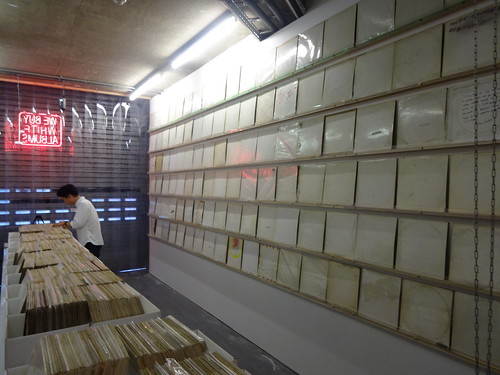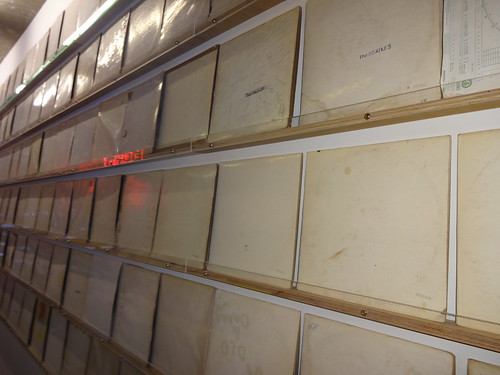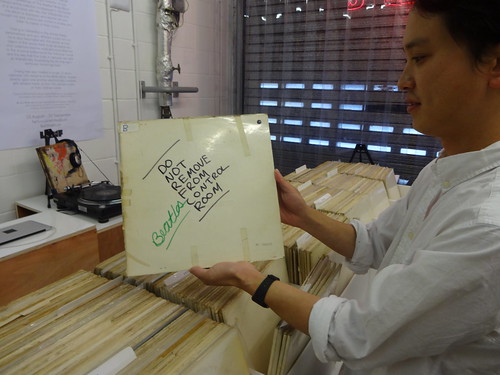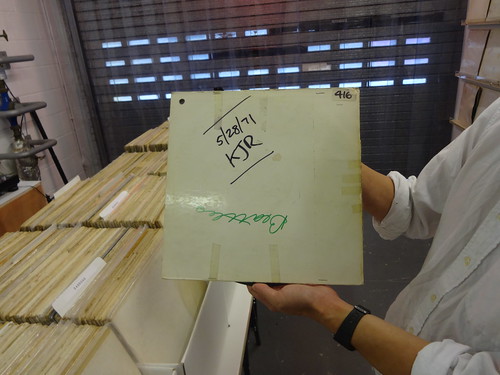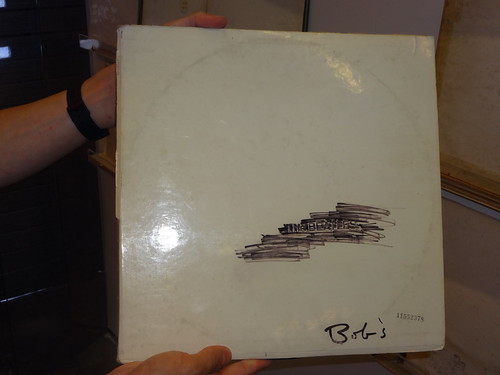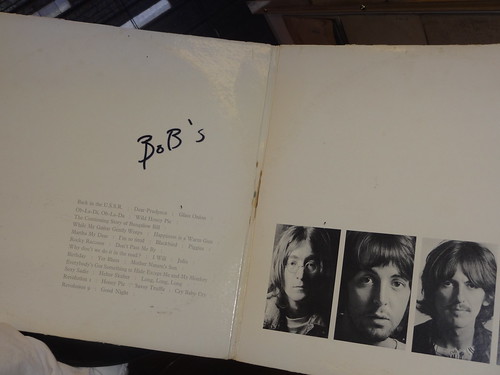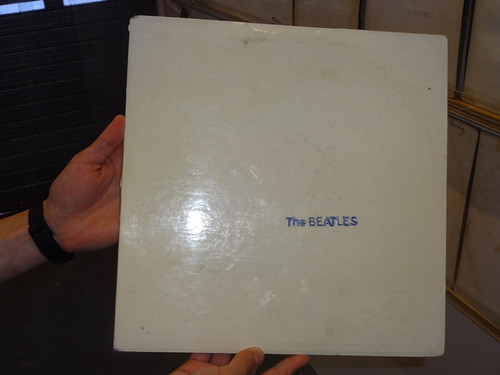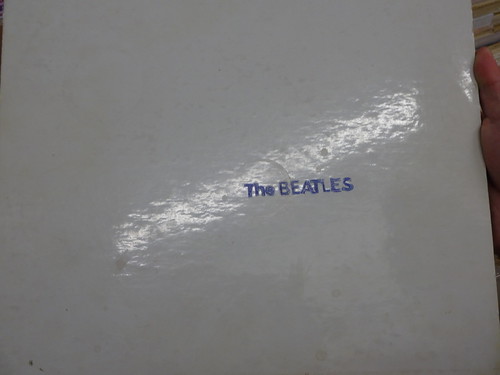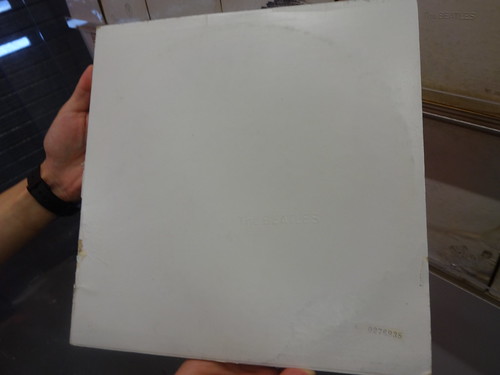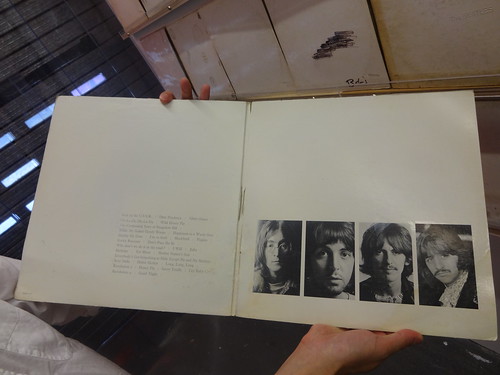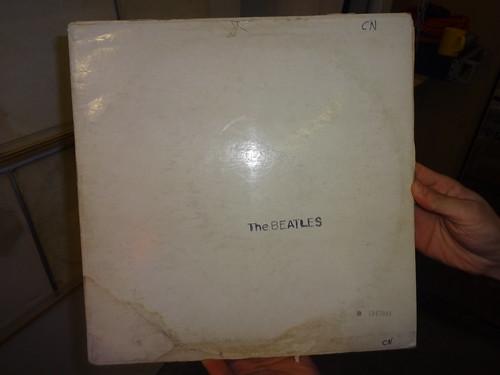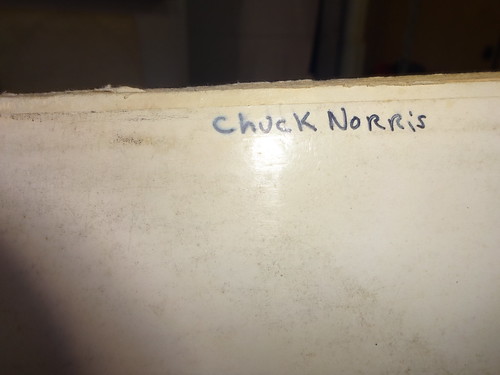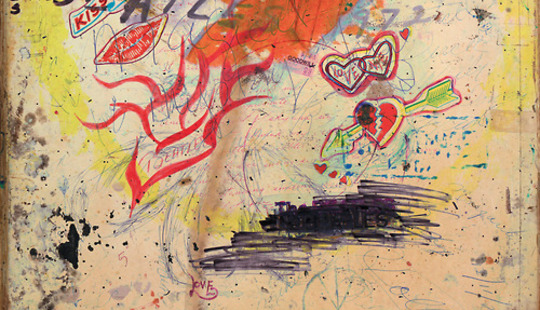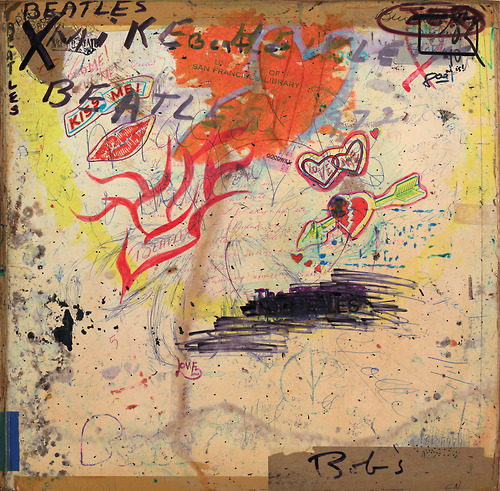
Rutherford Chang collects things, re-orders things and re-appropriates things. An artist playing with the conventions of order he’s re-ordered a New York Times front page to read alphabetically, dubbed an episode of the American TV show Growing Pains into English as spoken by Chinese actors and arranged the stipple drawings (portrait images) in every Wall Street Journal throughout the year 2008 into a year book. His is work that approaches rigmarole with an enthusiasm that jumps over the border of obsessive compulsive disorder and drags it back in a new, exciting form.
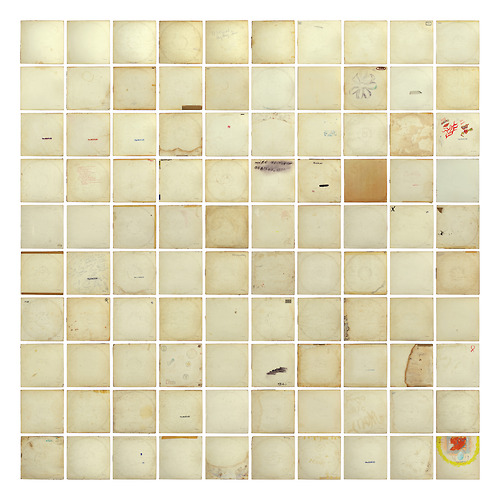
Having grown up in California, worked in Shanghai and Beijing and now living in New York’s China Town, Rutherford has been collecting original numbered pressing of The Beatles White Album for eight years. He first displayed his collection of then 600 plus albums in November 2013 in New York and as part of The Liverpool International Music Festival, that runs until the end of the month, Chang has opened up his exhibition here in the UK.
We Buy White Albums’ takes place in a makeshift record shop within the delivery bay of the curating Foundation of Art and Creative Technology (FACT) building. Here people can listen to one of his now 1,000 strong copies, browse the full collection and sell Rutherford their own copies of the album.
Talking to Rutherford in the FACT building cafe about his vast collection he’s enthusiastic and polite, showing an obsession for the prospect of finding more White Albums but a healthy detachment from the collection itself; “I’ve been collecting since I got my second White Album,” he starts. “That was eight years ago and buying that second copy was the inspiration to start the collection. I guess I’m attracted to the way that the covers age so uniquely. That’s also what first got me interested. These things were basically white squares 45-years-ago and have picked up all kinds of graffiti, stains, whatever, that tell all these stories and it becomes a perfect artefact, identical but unique.”
Having been made aware of the Liverpool International Music Festival by a friend, it makes complete sense for Rutherford to exhibit here, after all, it’s the origin of his endless pursuit, “ I’m interested in Liverpool as a cultural phenomena as Liverpool is the centre of The White Album.”
“I imagine people here have a pretty complex and special relationship with The White Album. I’m hoping there’s going to be a lot of White albums that I’ll be able to pick up. It’s also a Beatles week here as well whilst I’m exhibiting. People have said there will be lots of Beatles freaks about. I’m hoping to meet them, I’m hoping some of them will sell me their copies of The White Album.”
As the conversation continues the price and purpose of the conversation becomes the focus, Rutherford considering neither the financials nor the impossibility of the task a burden; “On average I spend maybe $10 an album,” he explains. “But some are cheap. I’ve 1,116 copies, so that’s about £10,000 on the collection, so that’s a bit over $1,000 a year which for a record collector isn’t much really, but these are all White Albums.”
And if every copy was his? “I’d stop collecting them, the collection would be complete and I’d be fully satisfied. It’s the perfect collector’s item, there’s a finite number but an absurd quantity so it’s virtually impossible, but there is a finite goal and sure, there’s an appeal in the fact that I won’t complete the collection. It would take lifetimes, and some have been destroyed.
When asked if he’d consider collecting The White Album in a different format, say on i-pods, cassette or smart phones, he’s unsurprisingly not interested.
“I’d say that’s a different value. It becomes about the technology of i-pods and phones, not about The White Album. They don’t tell the story in the same way. The actual digital files would not be different whereas all the vinyls actually play slightly differently because of the process of making them, scratches and the like. Plus the vinyls are all from the same origin, they’re all 45-years-old, not 46-years-old.
As we finish up and prepare to go and view the collection we ask if his love of collecting spills into his personal life. It does.
“I use very simple systems such as alphabetising and creating order to rearrange something in a way that may show more about its inherent nature. In a way these systems create the order for me and whatever comes of it comes of it. Sure, some people might say my apartment is meticulously clean and I do keep records of aspects of my personal life. I’ve kept every receipt from the last 10 years, in chronological order. I don’t consider this an art work. I have a list of every flight I’ve taken in the last two years.”
“It’s like the receipts are diary entries. And The White Albums are starting to have memories associated with them too. I can remember actually, it’s strange but yesterday, when I was setting them up, putting them in the record bins I was reminded of times and, on occasion, when I bought them. I actually don’t spend that much time with the records, pretty much only when they’re on show, then I spend a lot of time with them. When the exhibition was on in New York I listened to the album three times a day and it’s a long album, a double album. I probably know all the words.”
As we enter the exhibition the scale of the collection is only hinted at. The first 100 that he listened to are wall mounted impressively. Rutherford has pressed his own White Album from these which he’s selling at the exhibition, having recorded each one and then overlaid them into one track. It’s as you flick through the endless repetitions of white cardboard that the true vastness of the endeavour hits you. It’s fascinating and exhausting, truly unique yet also mundane, some carry messages (‘good luck, needs a good clean’ adorns a post it note on one), others are drawn visual jokes, some are just a pressing of The White Album. Rutherford kindly picks out a couple of his current favourites, which are captured below with a brief comment from him.
“This one was obviously removed from the control room. From a record station, KJR. I have no idea what station this is, usually radio station names have four letters.”
“What’s interesting about this one is that a friend of mine, when the show was in New York, she was asking me abut this copy, so I asked why and she told me that her father had passed away a few years ago and this looked like his hand-writing. I’d bought this one off E-bay from Cleveland and she’s from New York so it probably wasn’t his. We couldn’t confirm either way, but she said it looked like her father’s handwriting. It could be her father’s copy.”
“This was the first one I bought as a 15-year-old. What’s interesting about this one is that I thought it wasn’t a first pressing, but then way later when I looked carefully at it someone had erased the number but the imprint remains. So this was going to go in my junk bin.”
“I have one that’s painted white. I have no idea why, probably to make it seem newer. They didn’t paint the back or the inside.”
“You see it has these initials. Then you open it up. Chuck Norris must have owned it.”
Rutherford Chang's We Buy White Albums is on show at FACT’s loading bay space on Wood Street from 15 August – 14 September 2014.
For more information visit the website.


